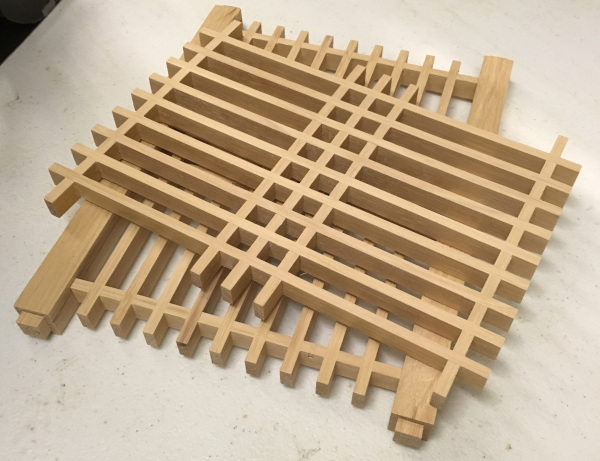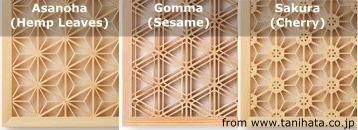Kumiko—Japanese traditional decorative woodwork


In my current end table build, I’m incorporating kumiko panels to the design. Pictured above are the 2 panels that I created. The pattern is called “Senbon-goushi,” which literally translates to “thousand-column lattice” due to the density of its vertical members. Ideally, I should’ve made the spacing even finer to get the full effect, but I’m glad I didn’t because of the finickiness of the work and hickory is the last type of wood you’d want to use for it. Traditionally, kumikos are made from cedar and cypress.
This pattern is one of more simplistic ones, involving only vertical and horizontal members. Kumiko patterns often shown in the U.S. involve diagonal base structure with intricate patterns in individual cells. Those are given a name after plants (flower/leaf shapes):

Here are (English) links to Japanese companies who make kumiko panels:
They offer more complex patterns as well as impressionistic artwork made by combining different patterns.
Although I grew up with kumiko work around the house, I never associated them with woodworking. I became aware of kumiko largely by Fine Woodworking Magazine, most notably their photo editor, Michael Pekovich. The current issue (#274) actually features his article in this very topic: How to Create Kumiko at the Tablesaw. Also, there is a (free) video piece on his kumiko-making process: The Quiet Art of Kumiko. Lastly, Matt Kenny (former FWW editor, also deep-dived into kumiko making) has a blog entry on his quick take: Here’s how to get started with kumiko. Enjoy!
Leave a Reply
You must be logged in to post a comment.